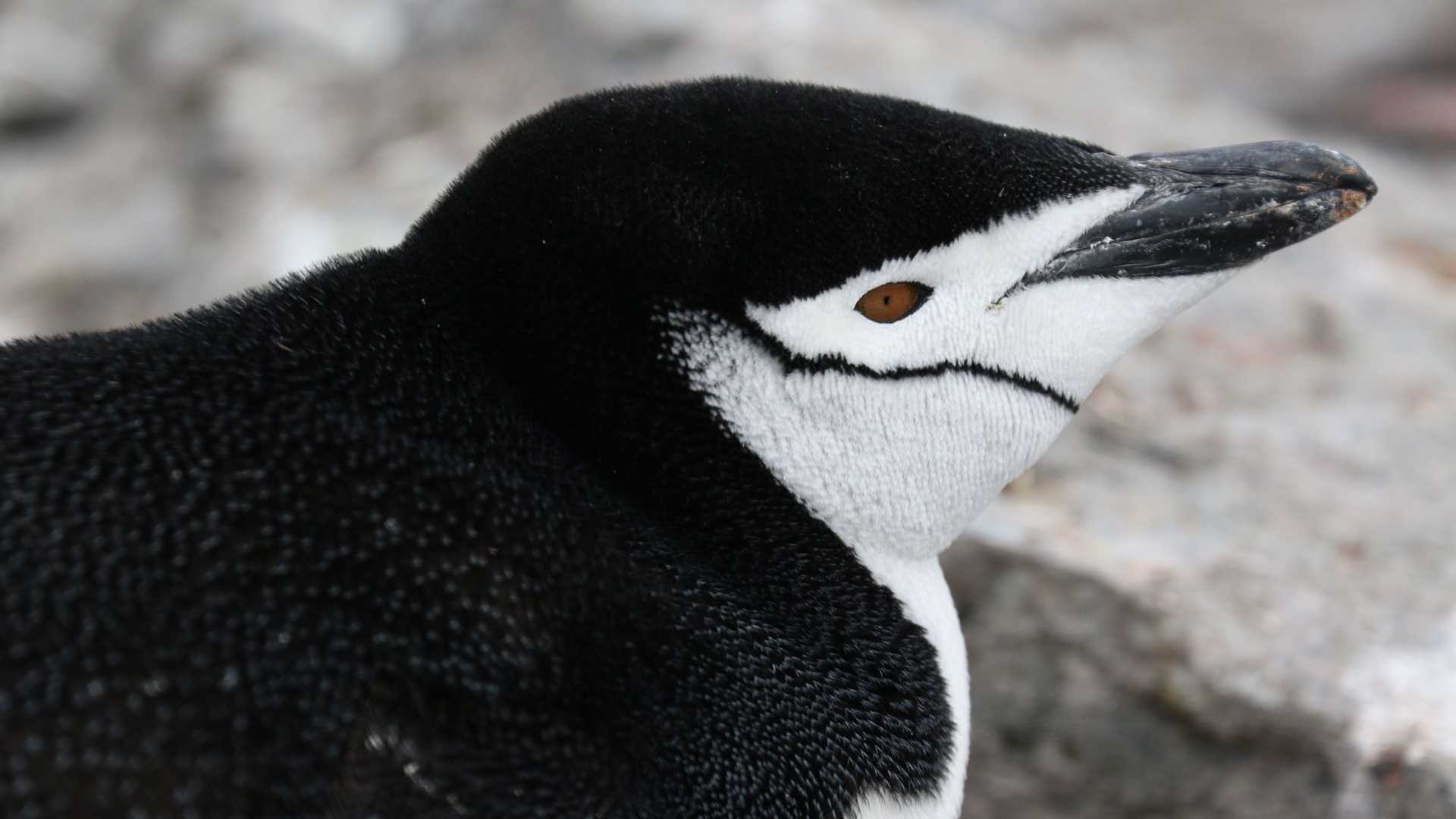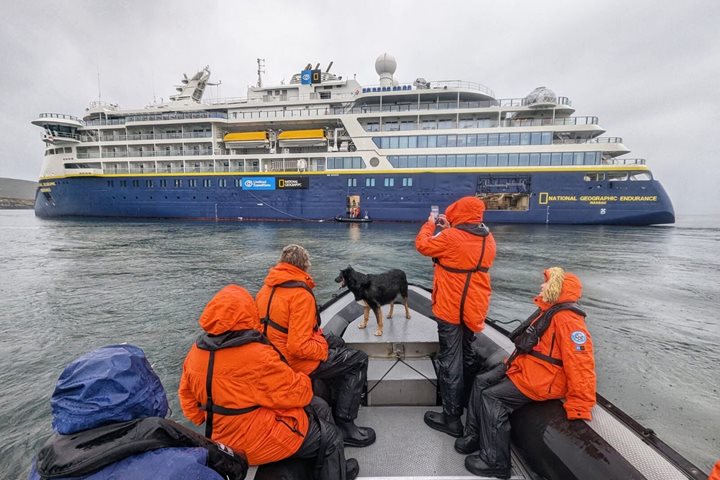As the National Geographic Resolution crosses the Scotia Sea, conditions have been much calmer than the Drake allowing us time to explore the South Orkney Islands. After lunch we made a landing on Coronation Island and had our first look at the charismatic chinstrap penguins and a little dose of South Georgia with both fur and elephant seals on the beach. What an incredible spot! A tidewater glacier in the background and the call of the chinstrap made for quite a dramatic and vocal scene!
The South Orkney islands were discovered in 1821 by two sealers: Nathaniel Palmer from Connecticut and George Powell from the UK. Seals were eliminated from the South Shetland Islands within three years of their 1819 discovery, and these two sealers went out searching for new sealing grounds from Elephant Island. While they did not find a bounty of fur and blubber, they did add to the map of the Southern Ocean. Powell named Coronation Island to celebrate the crowning of George IV who had become King of Great Britain in 1820. Nearby Monroe Island was named for Palmer’s sloop James Monroe.
On nearby Laurie Island, a famous Scottish Expedition under the leadership of William Spiers Bruce spent the winter of 1902 on their ship the Scotia (from which the Scotia Sea is named after). The small weather station built, by the Scottish Antarctic Expedition, was taken over (by mutual agreement) by the Argentine government in 1905 and renamed Orcadas. Of the 67 stations around Antarctica, it is the longest running scientific station today.
Visiting the South Orkney Islands has been an amazing bonus to an already extraordinary trip.







